Wildebeest Migration / Wildebeest Crossings / Herdtracker
Wildlife / Safaris / Holidays
Home » Wildebeest Facts
We know you have been wondering what is the great wildebeest Migration or understand some great interesting facts about the Wildebeest Migration. The wildebeest migration is a phenomenon wonder that happens every year involving wildebeests and zebras that migrate from Southern Serengeti to Masai Mara and back.
The great wildebeest migration is renowned for being one of the world’s most visually stunning adventures. But determining when to travel to witness this amazing spectacle depends on several factors, as different times of the year are marked by variations in scenery so it is best to seek out advice from a reliable operator and experienced tour guide as they know when and where you should be.
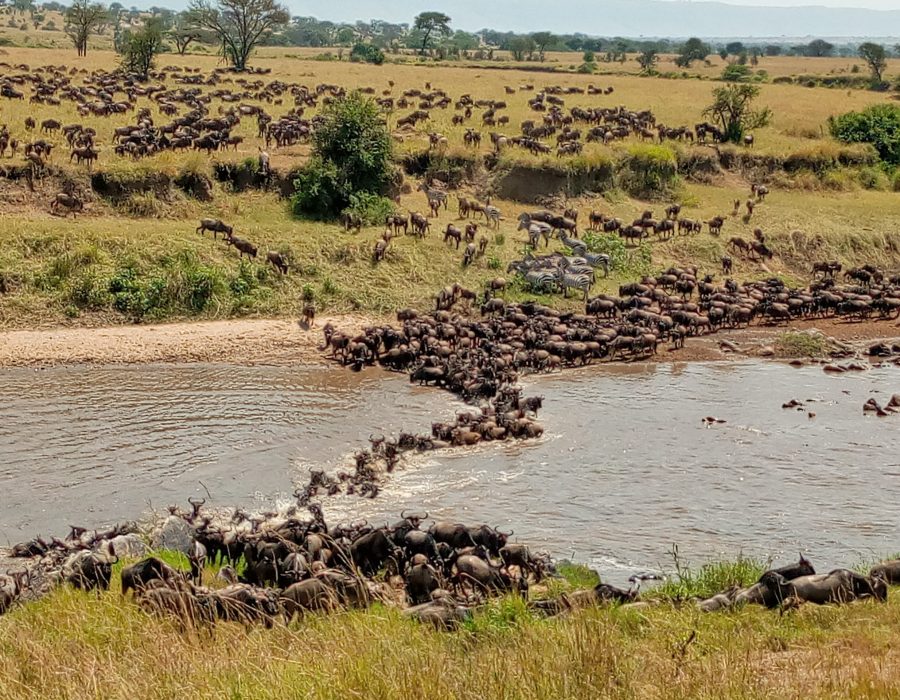

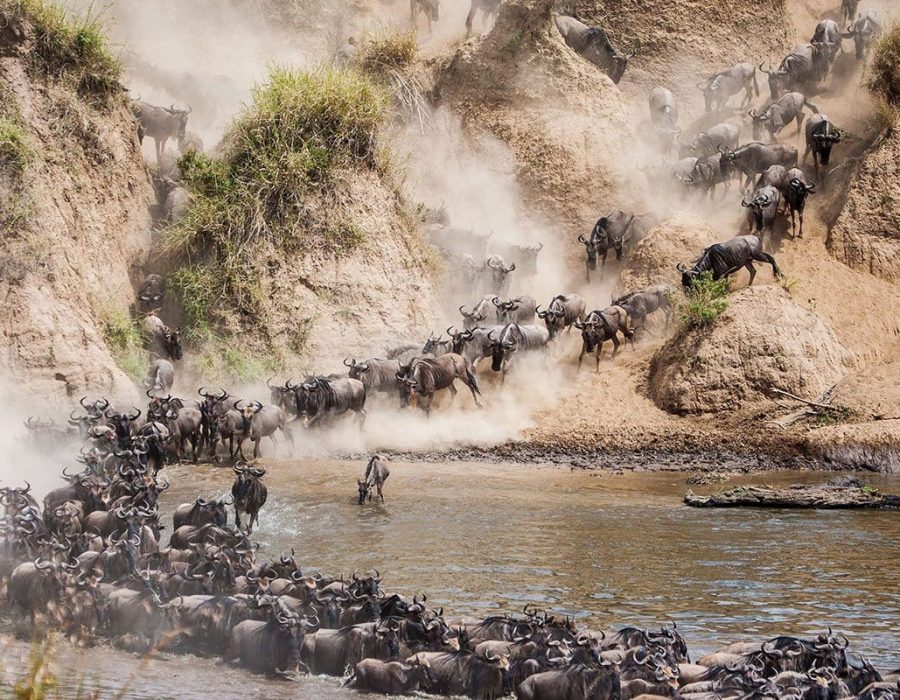
This spectacular wild wonder of the earth in which millions of wildebeest and thousands of zebras and gazelles migrate occurs every year in Kenya and Tanzania. It is astonishing to witness such large herds moving in the same direction at a time. More than 1. 5 million wildebeest, 300,000 zebras, as well as impala, eland, and Thompson’s gazelles, join the mass run in search of food and water. This striking overland migration occurs in the East African region makes the whole world stunned.
The mass movement of Wildebeests happens all year round from January to January every year. While the river crossing is the most coveted event in the migration cycle, you can witness the great migration all year round. The other major events in the migration cycle include birthing season and rutting season.
The Wildebeests are constantly migrating across the Serengeti-Mara ecosystem every year. Once the grass is depleted in one location, they move to the next, searching for water and new grazing fields until they complete the entire cycle. This means you can catch the migration all year round in different places.
The wildebeest calving happens in the Ndutu Conservation Area after they arrive from a long journey trek from Masai Mara through the plains and now down to the Serengeti South and Ndutu.
The Ndutu – Serengeti South region tends to be filled with millions of wild animals including the big cats. From January to March every year, the wildebeest calves give birth to 8000 calves who later will migrate up north in Serengeti and Masai Mara.
Immediately the wildebeest calves are born, and they walk within 5 minutes of their birth. This is an adaptability skill to keep them away from the major predators of the wild. If they won’t work fast enough, they might be mauled by the big cats.
The journey from the South of Serengeti to Masai Mara is very dangerous and risky. Wildebeests and Zebras pass through the great plains of the Serengeti and Masai Mara, which are occupied by big cats, hyenas, and rivers infested by crocodiles.
Imagine losing more than 250,000 animals during this season of migrating every year in search of green grounds and water. They experience more threats and more danger, especially to the young calves learning to move, others are the old ones that can not keep up with the herd speeds.
While the Wildebeest River crossing to and from Masai Mara Reserve from August–October is the most famous stage of the migration, Wildebeests spend nine months grazing and migrating through Tanzania and around 2-3 months on the Kenyan side.
Most of the migration happens in Serengeti National Park, Ndutu Conservation Area, Ngorongoro Conservation Area, and the Grumeti Reserve to the west of Serengeti.
The wildebeests migrate 1000 kilometers around the Mara-Serengeti ecosystem in search of food and water. It’s quite a long trek that covers long distances and a lot of threats and dangers along the way. The migration happens in a clockwise direction covering approximately 500 miles from South Serengeti to Masai Mara and back to South Serengeti.
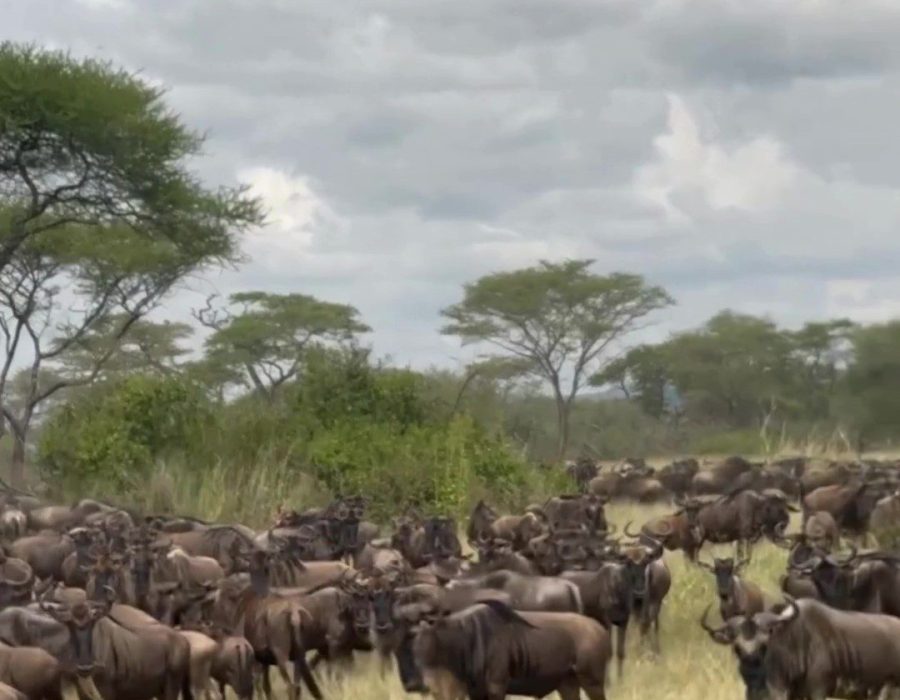
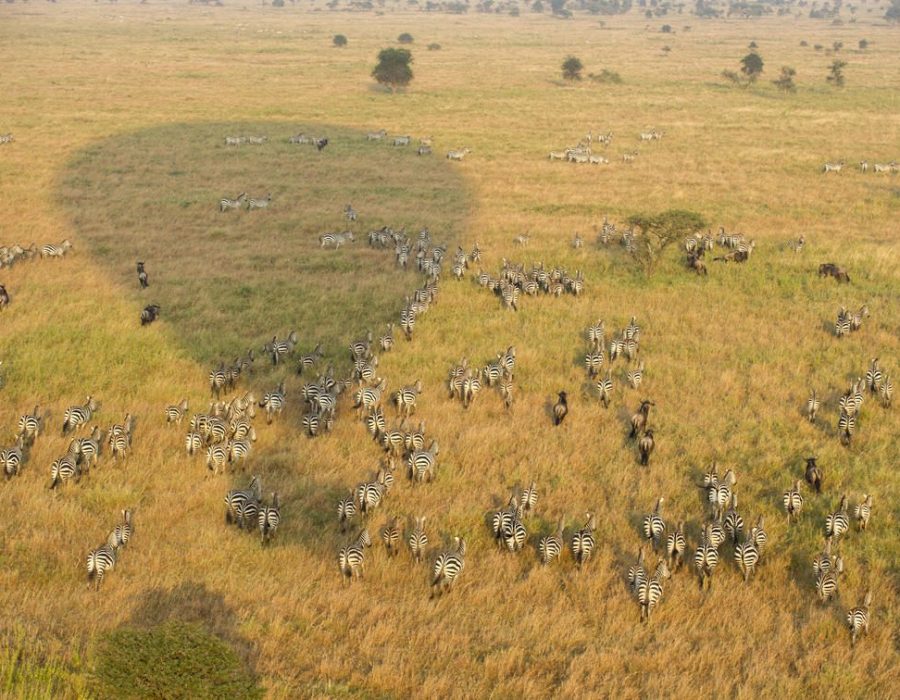
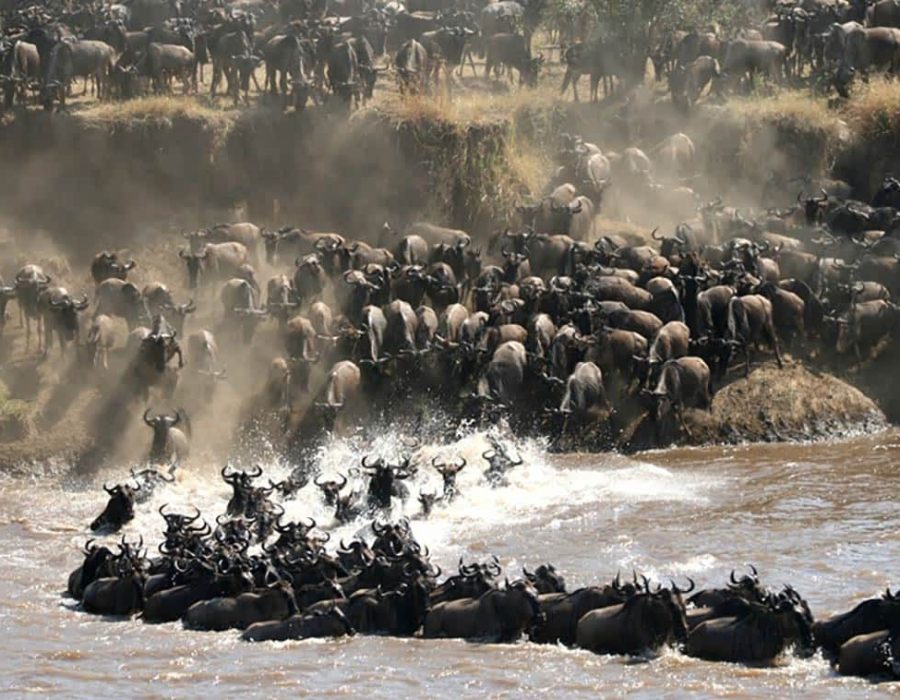
Stay up to date with our Wildebeest Migration Updates each year from January to December.
These are the recent wildebeest sightings spotted during the latest migration in Kenya and Tanzania.
The Great Migration continues in the Southern Serengeti as large herds of wildebeest and zebras move steadily south following recent rains....
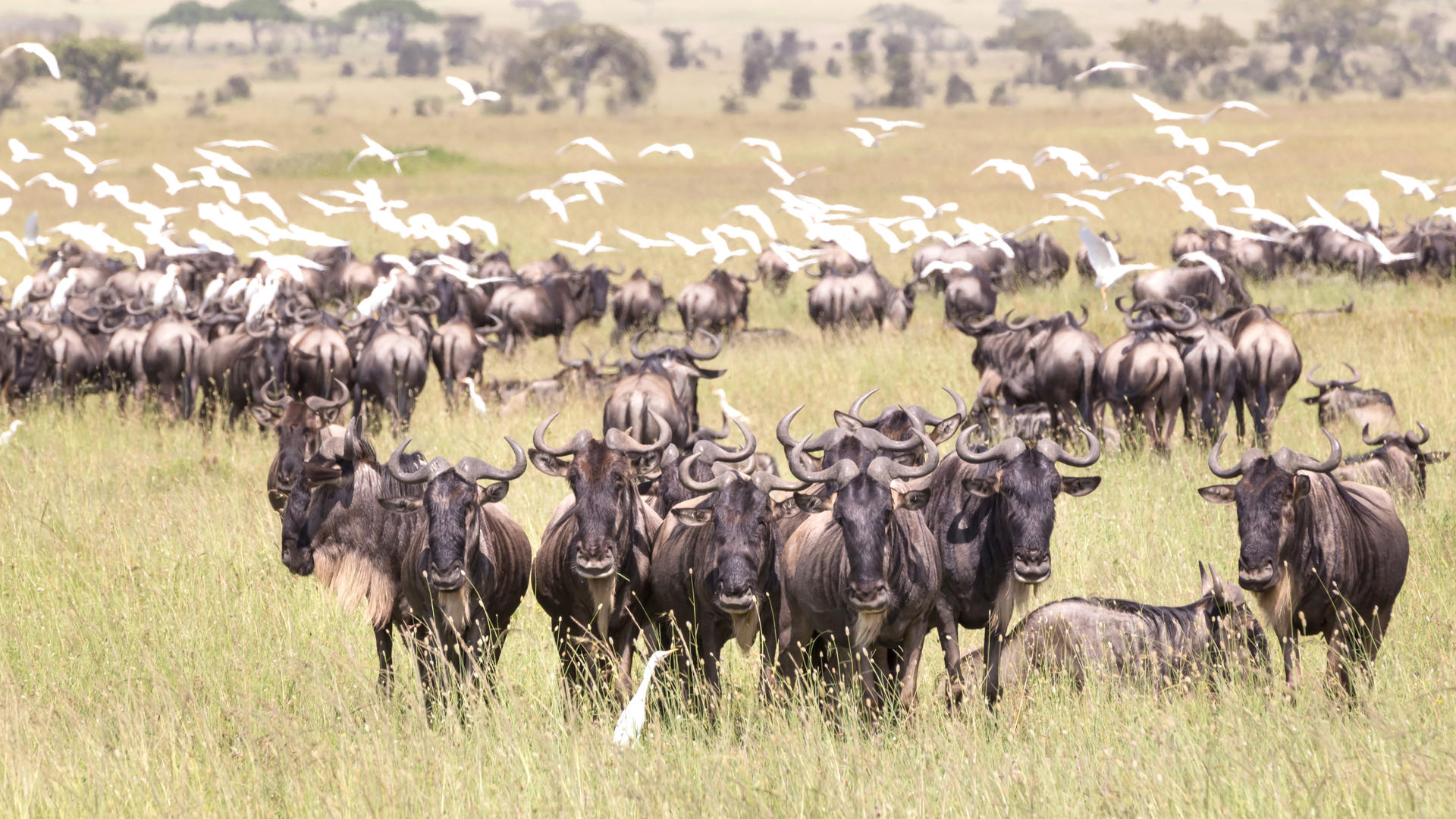
Wildebeest herds continue their steady movement south through the Serengeti, with large groups now seen heading toward the Seronera region. More...
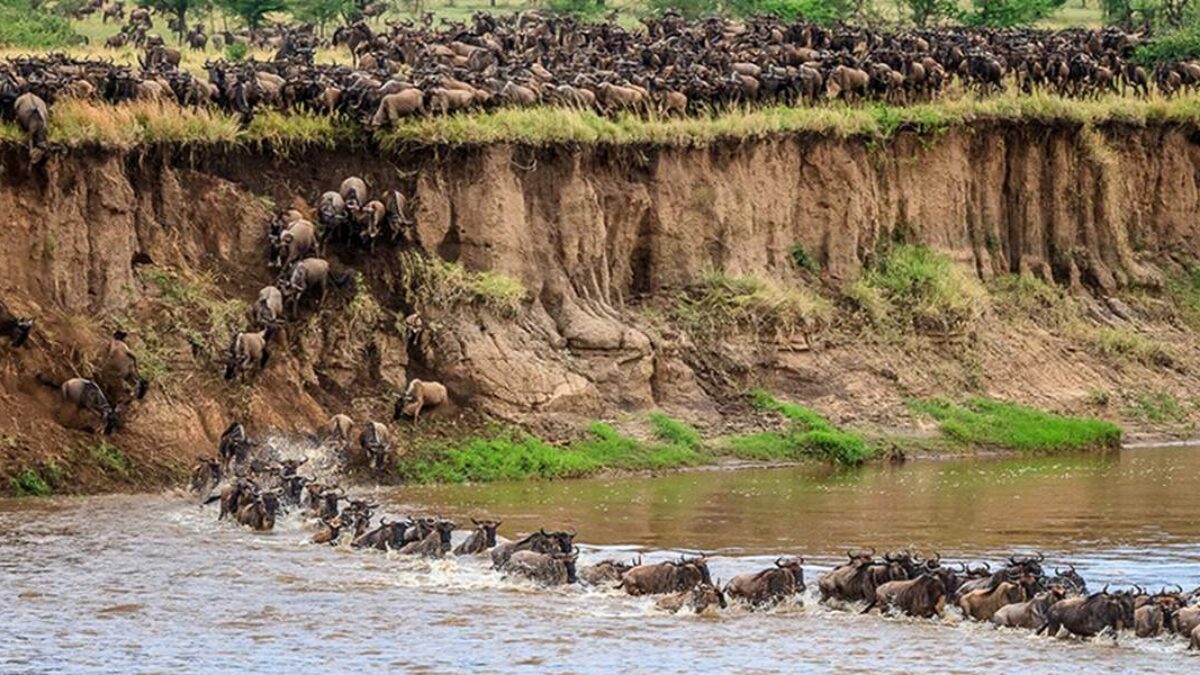
Following widespread rains across the Serengeti, stretching all the way down to Naabi Hill, the migration has begun to shift direction....
We have had so many people miss availability for their migration safaris in 2025. Contact us now to secure your spot for this amazing spectacle in 2026.
Get notified about new wildebeest sightings